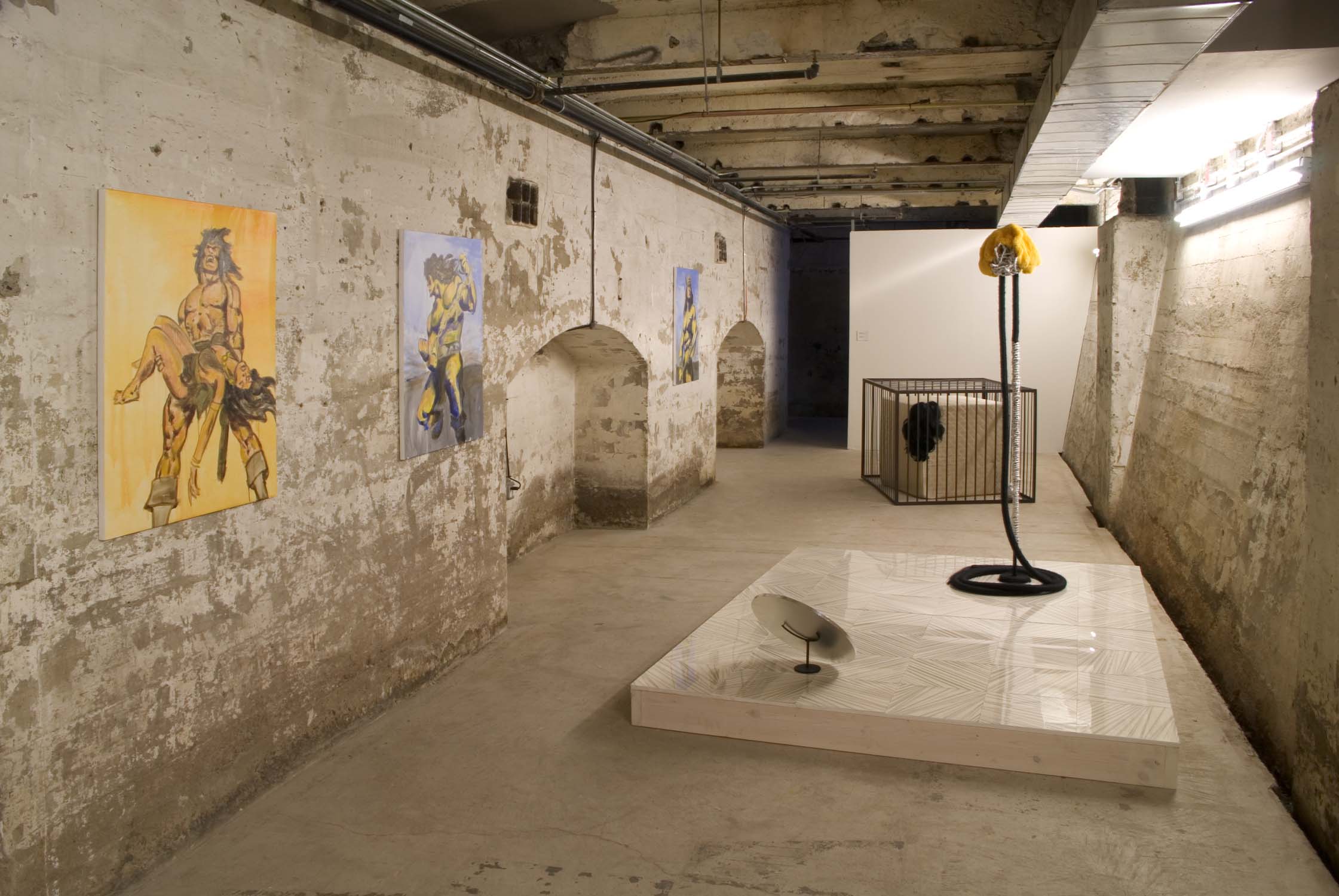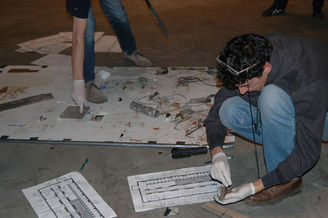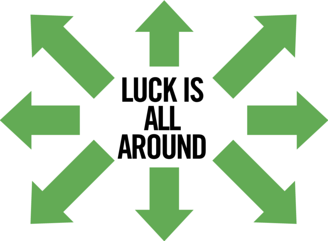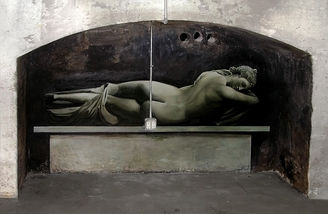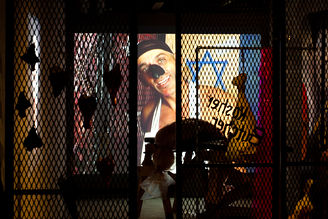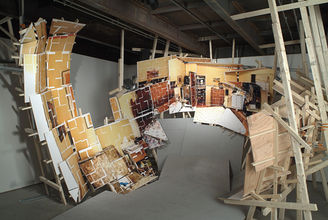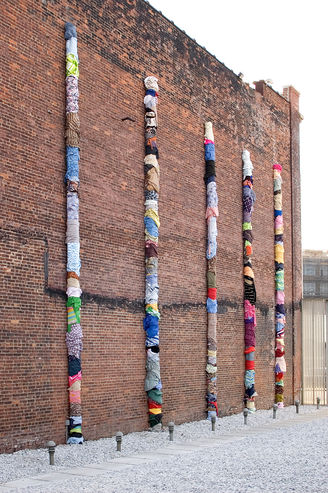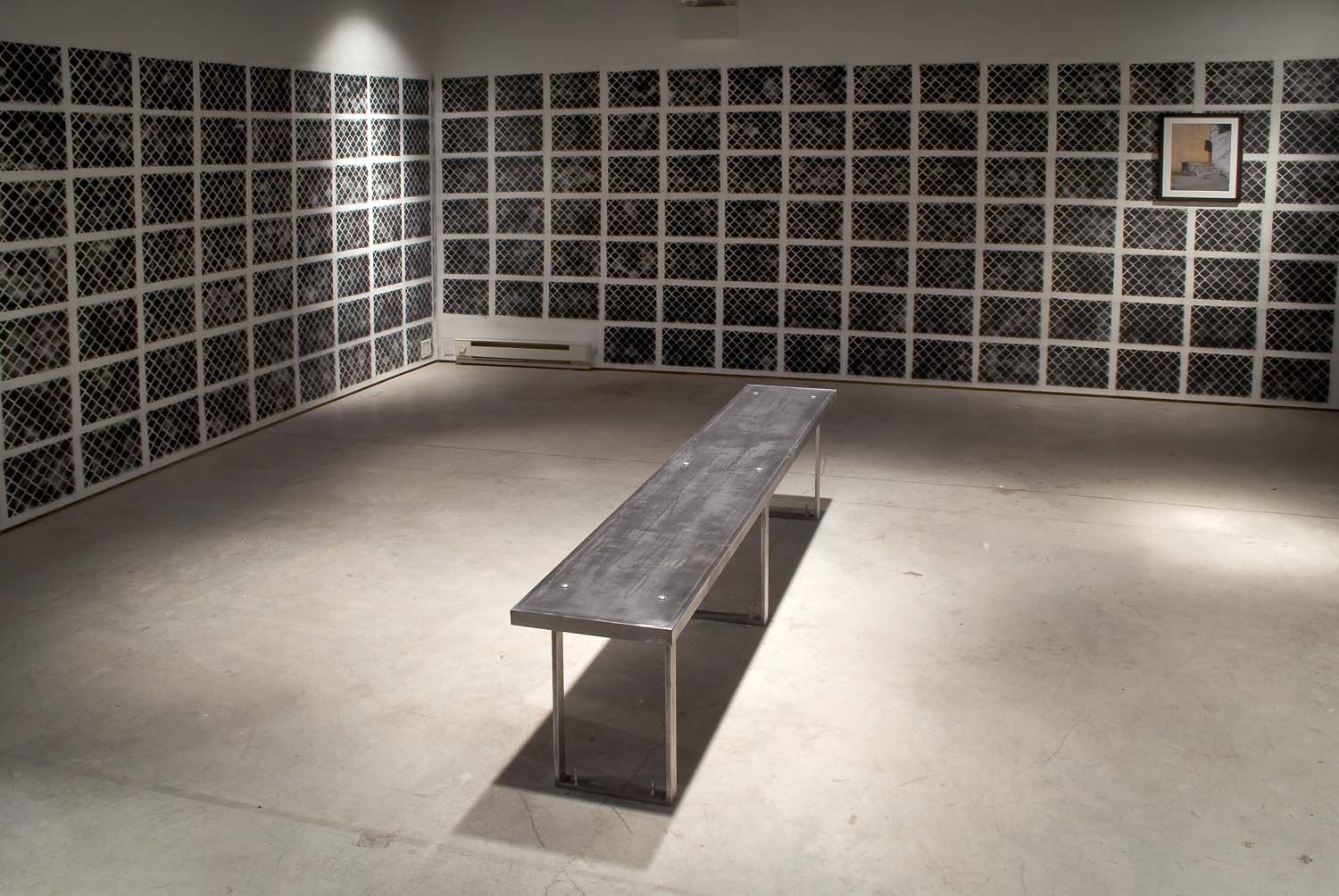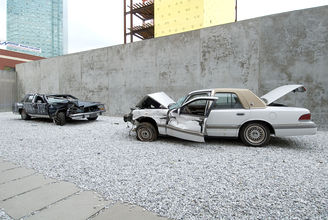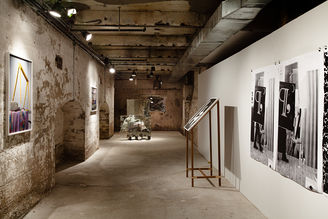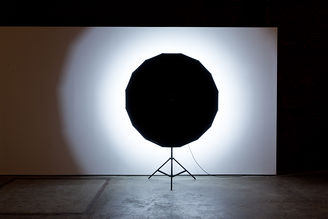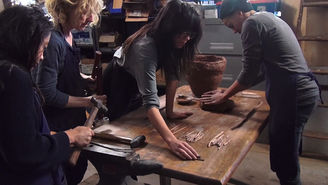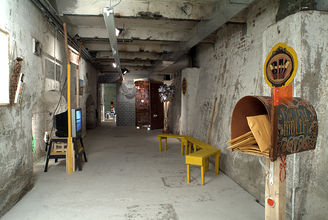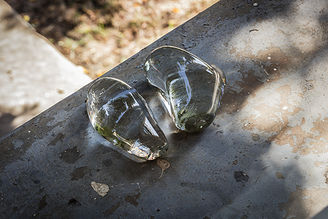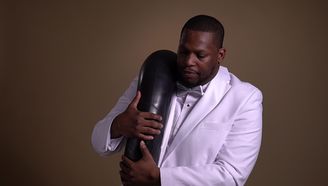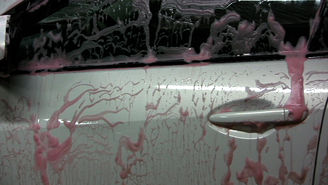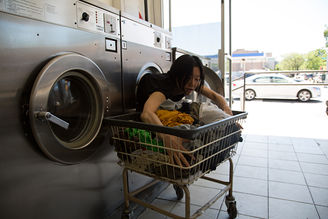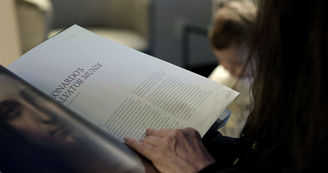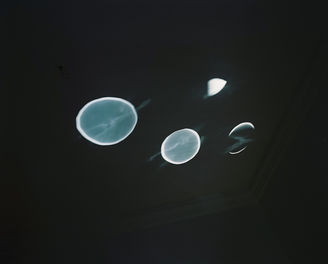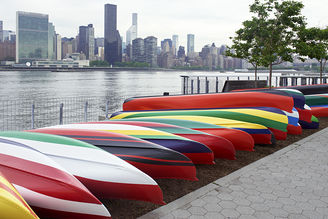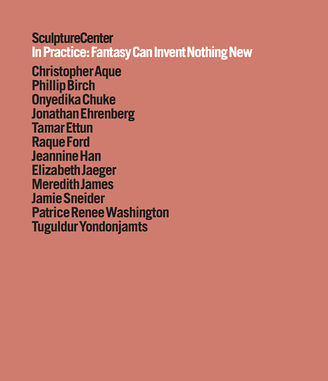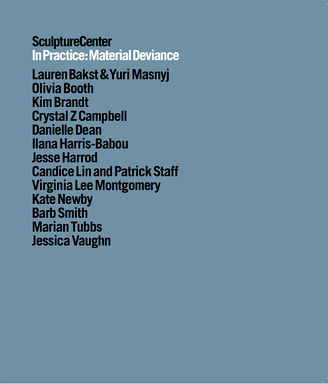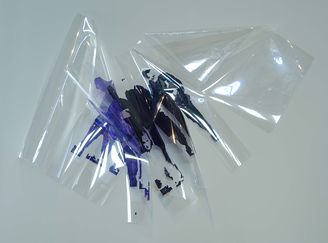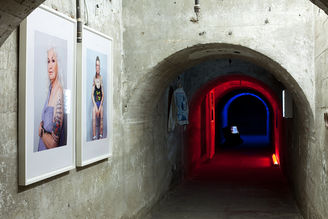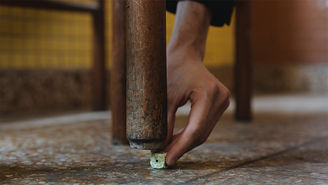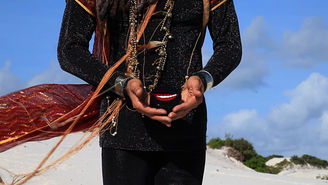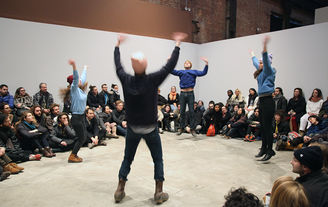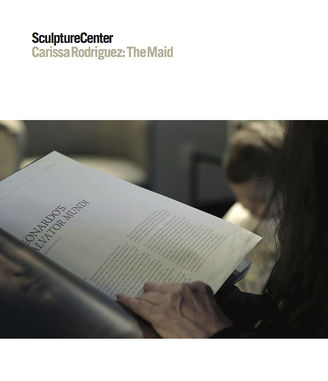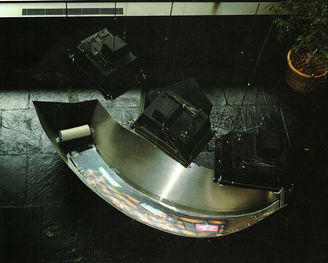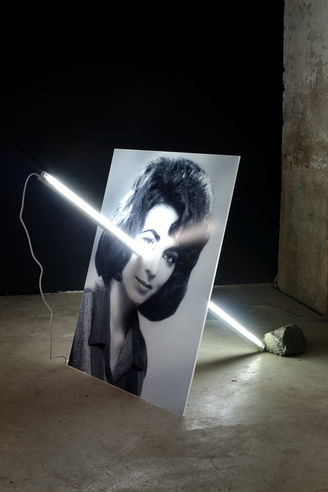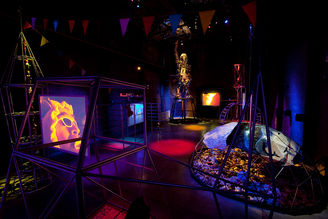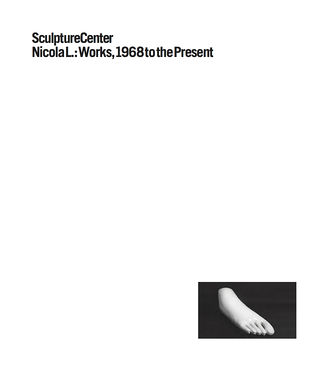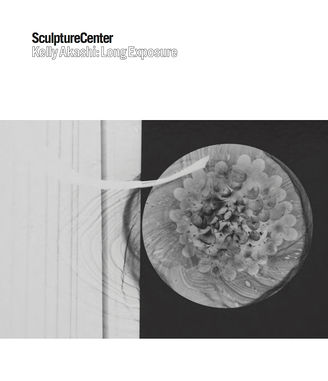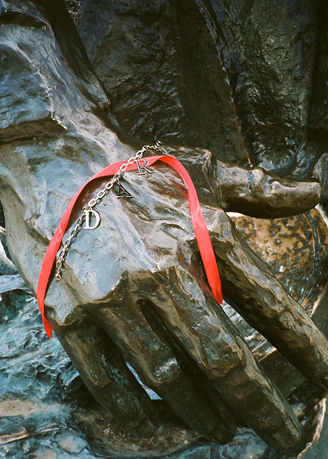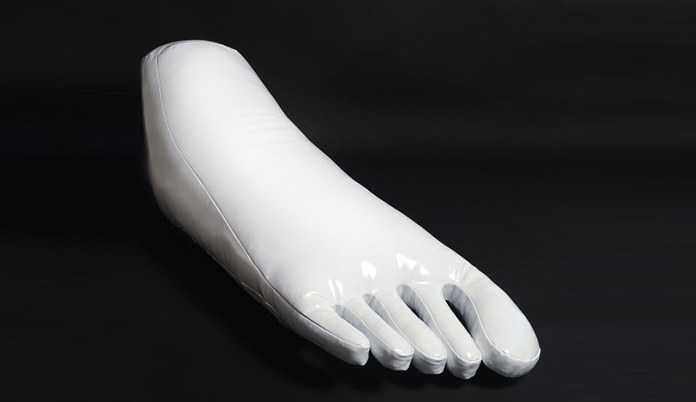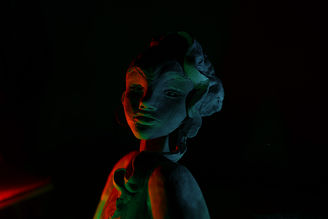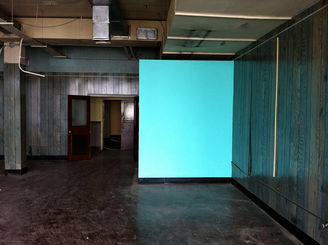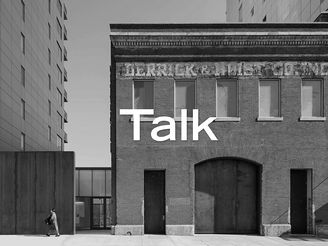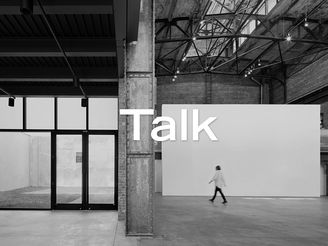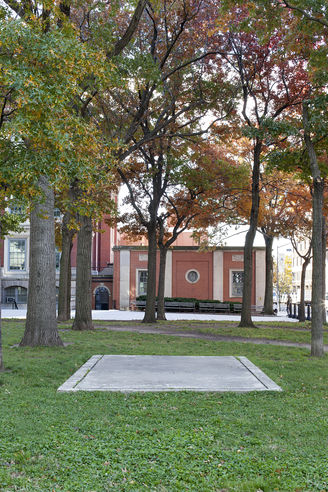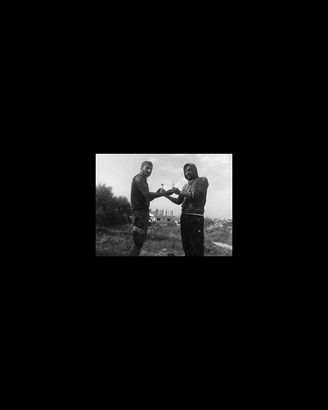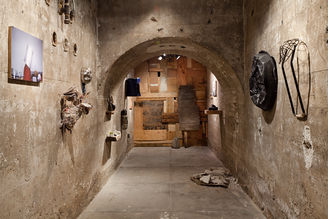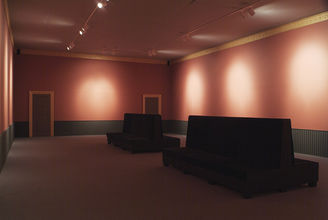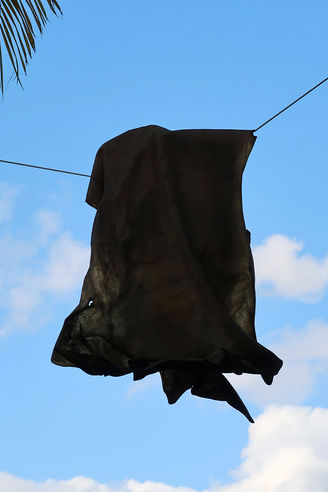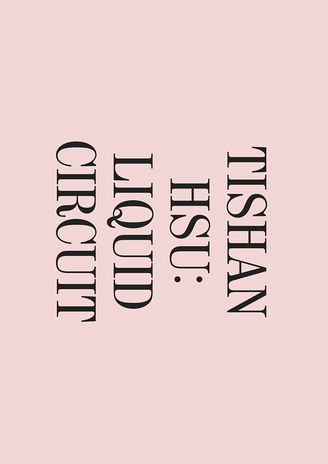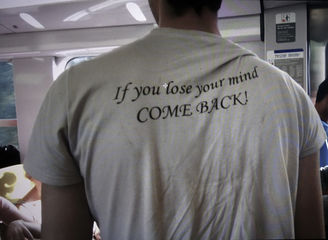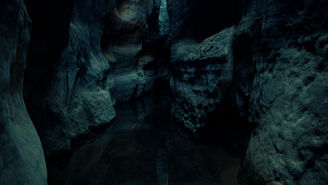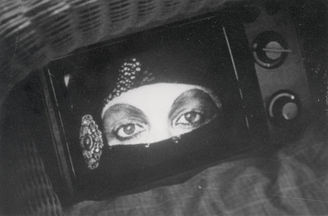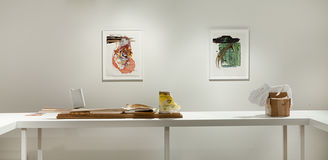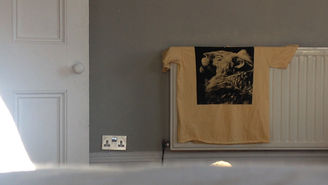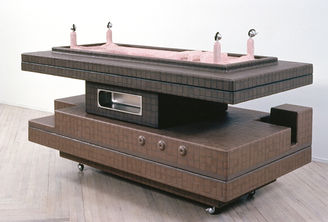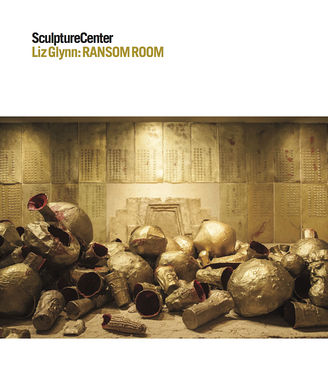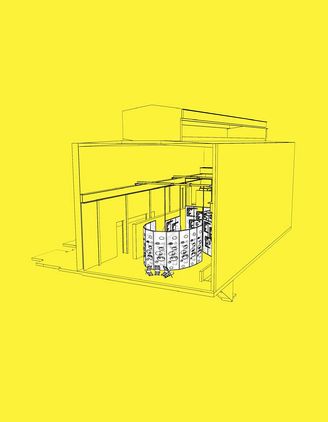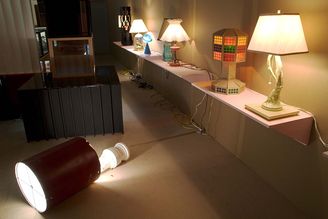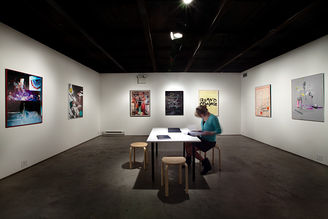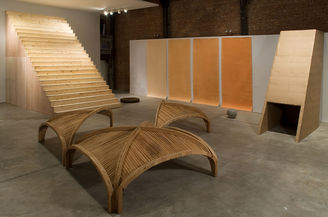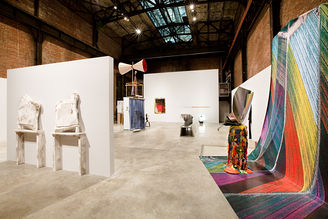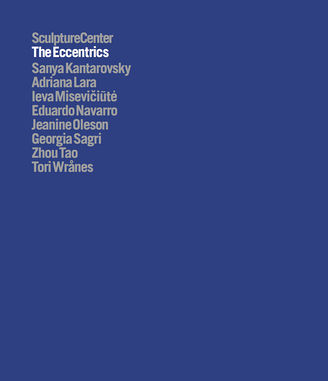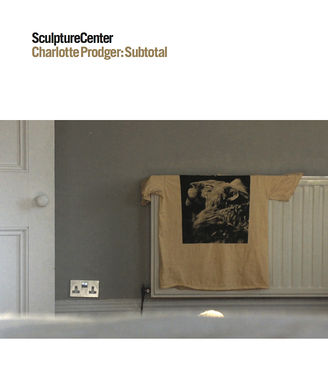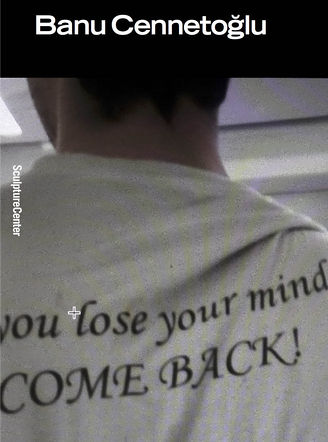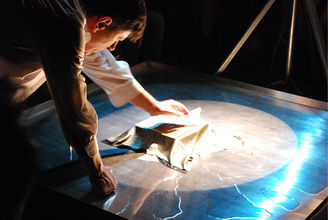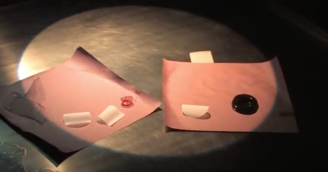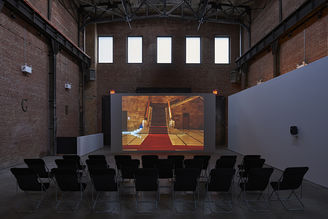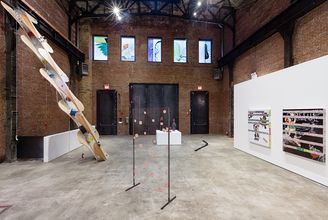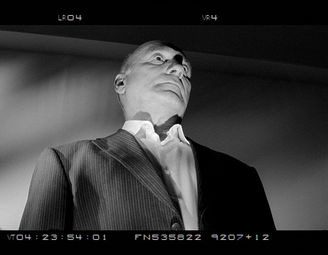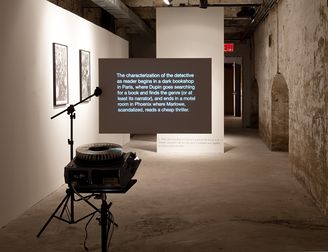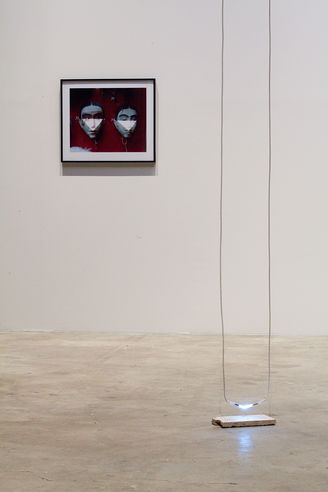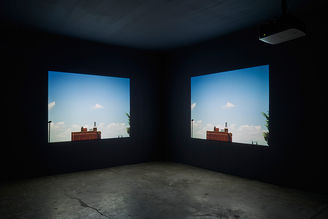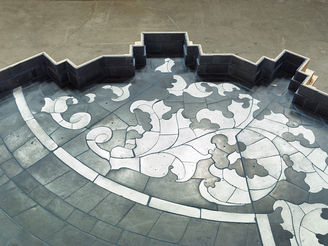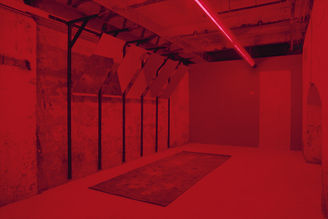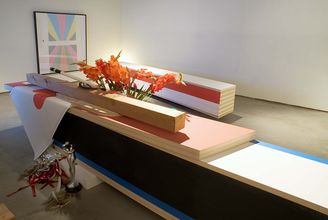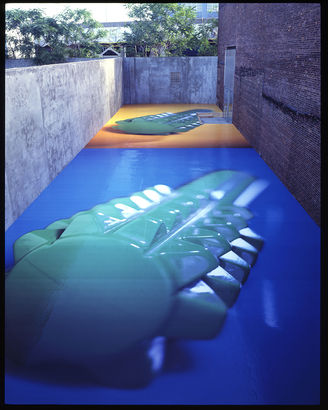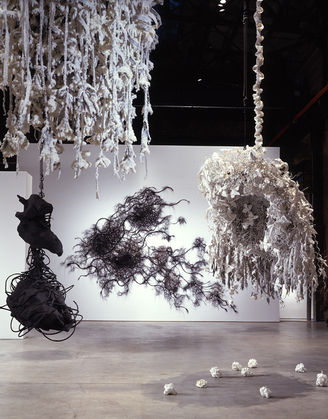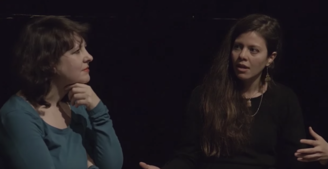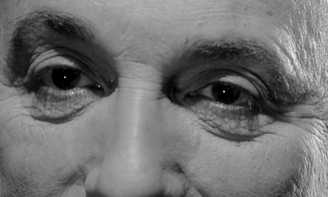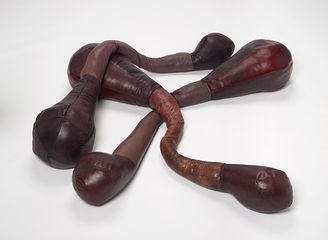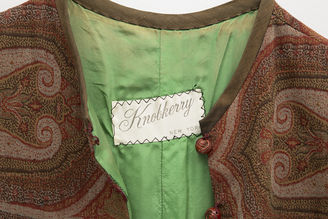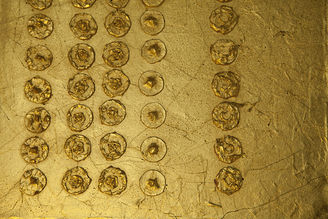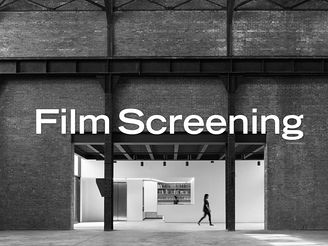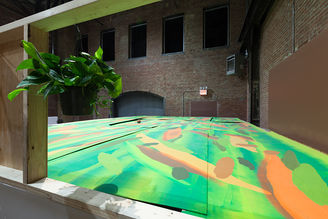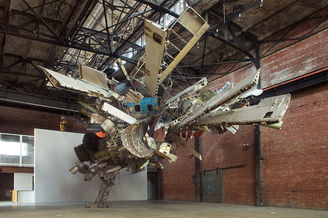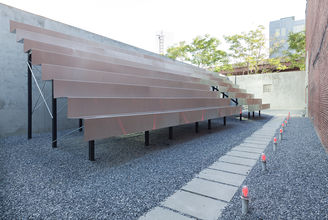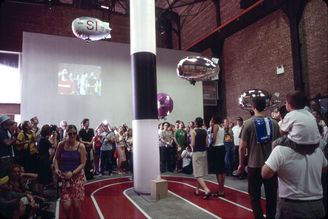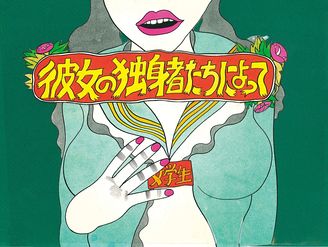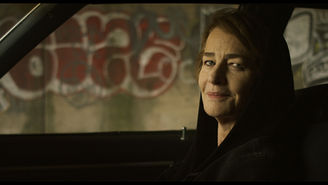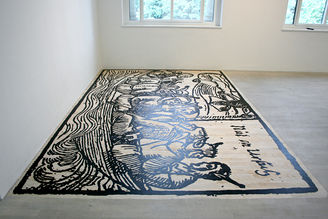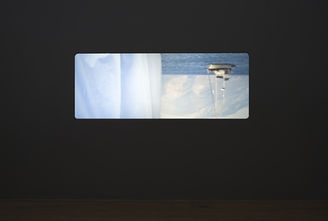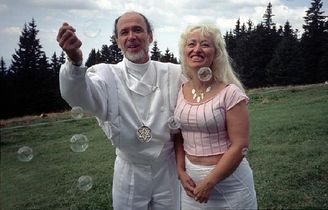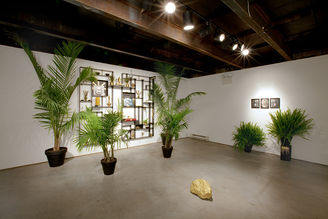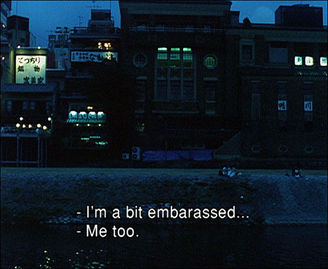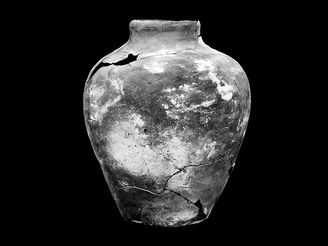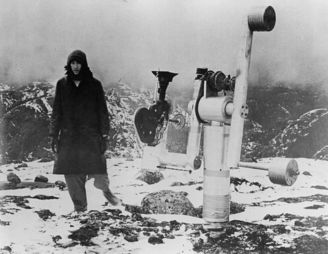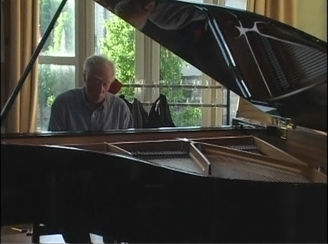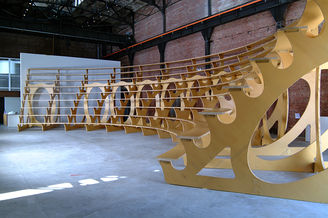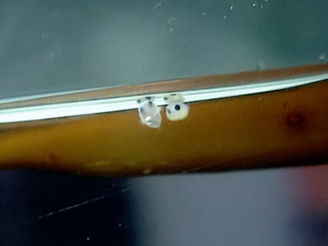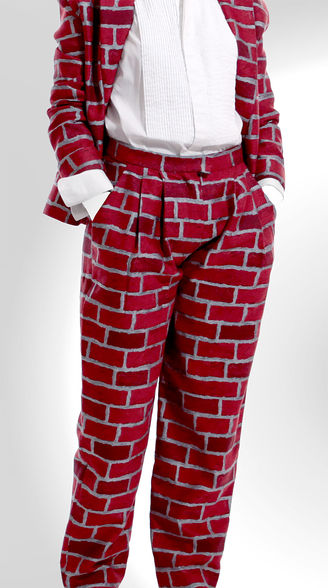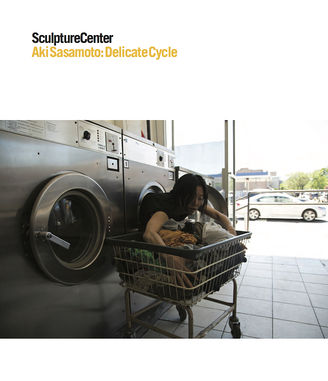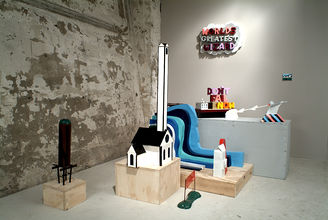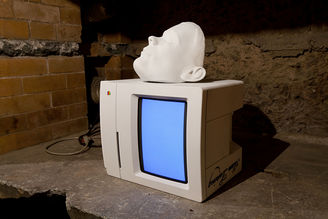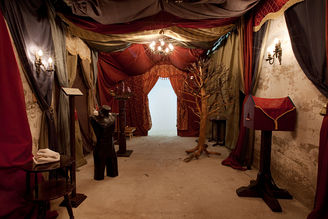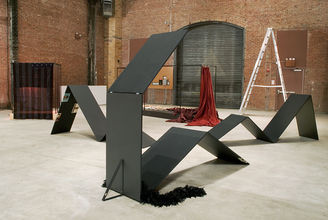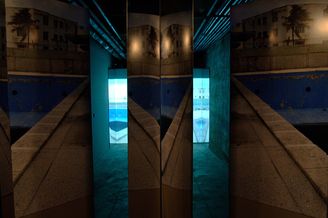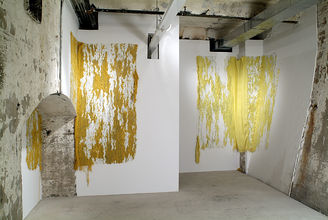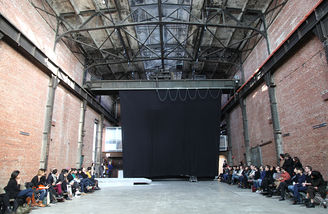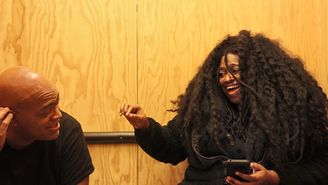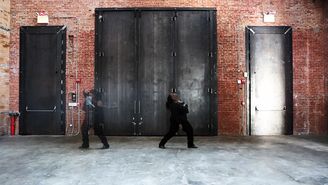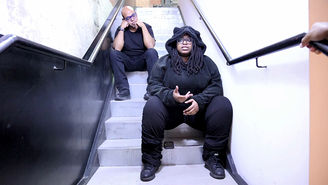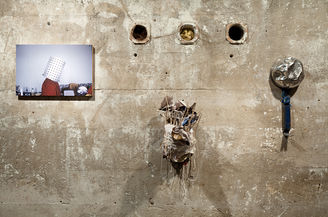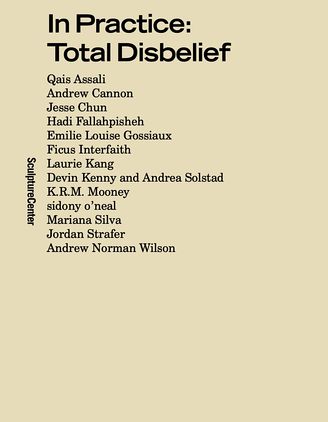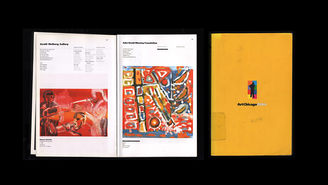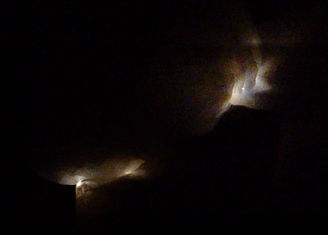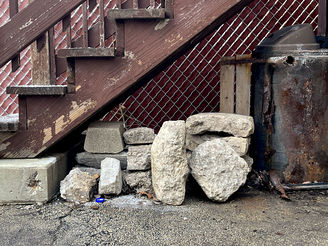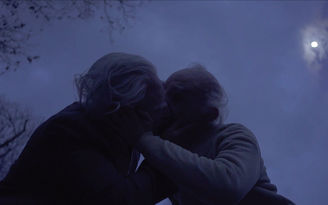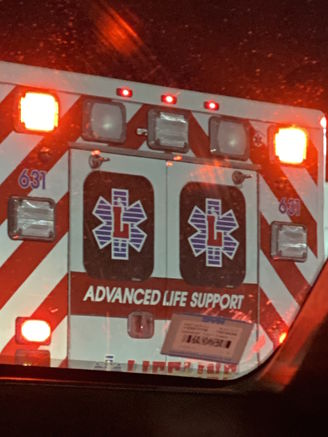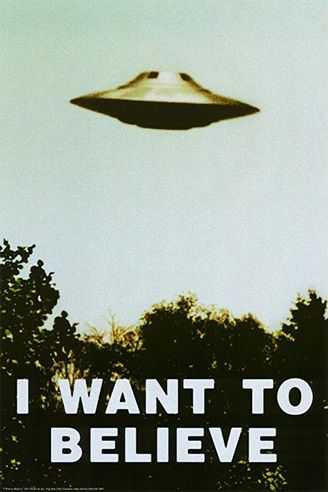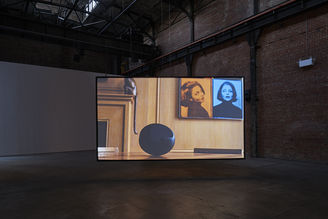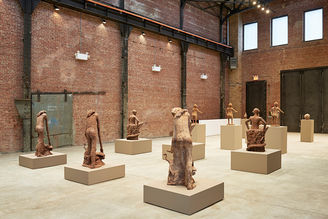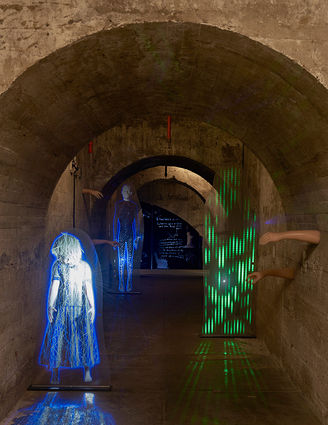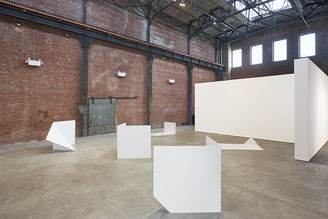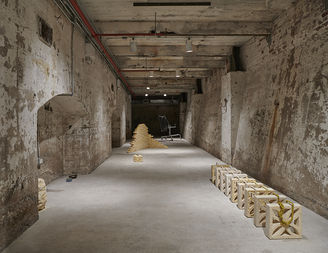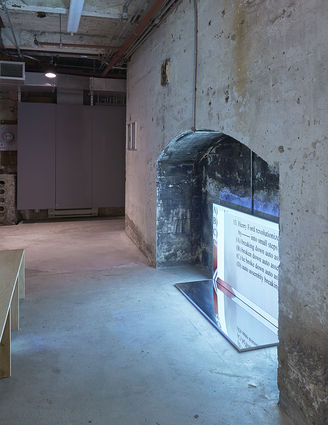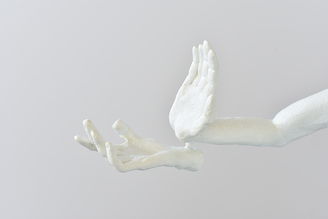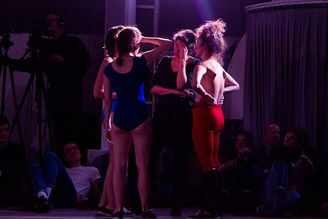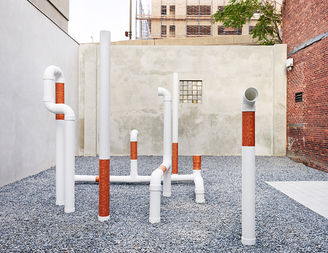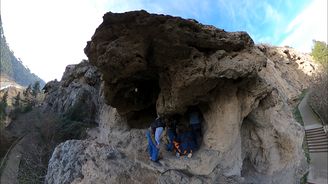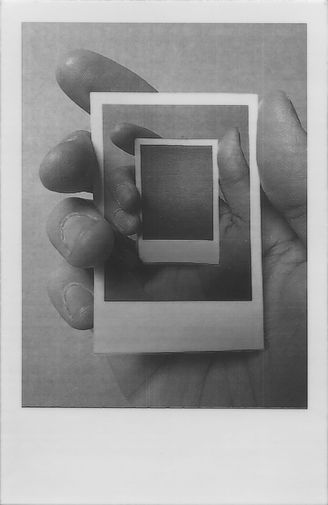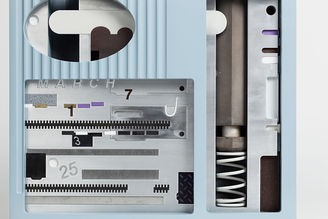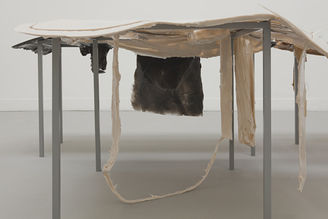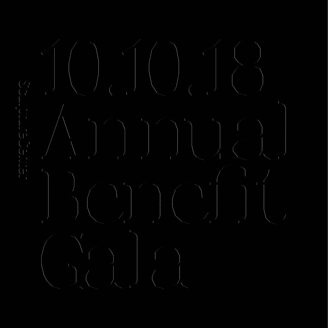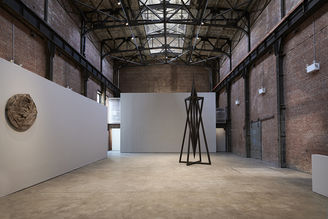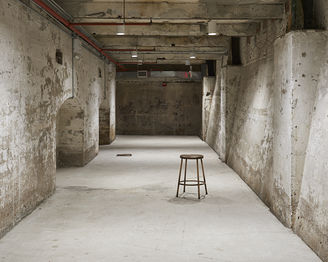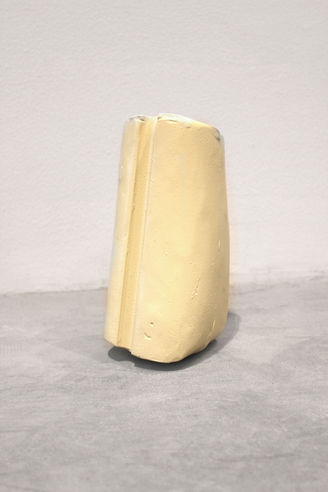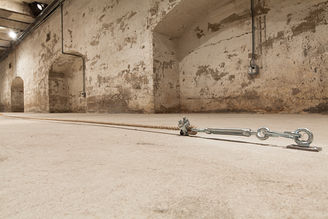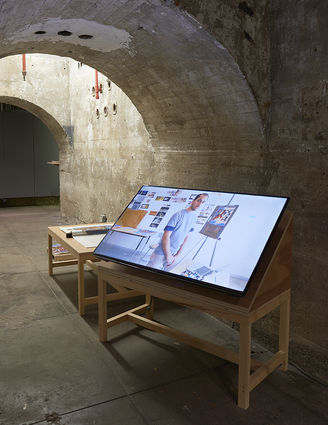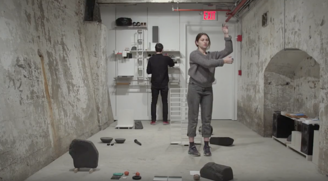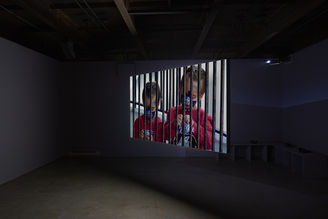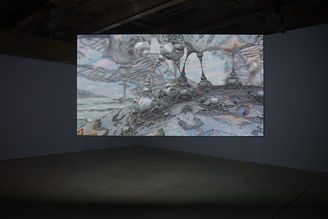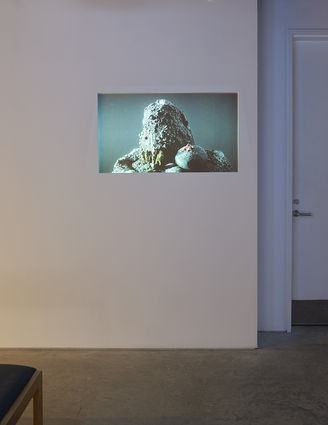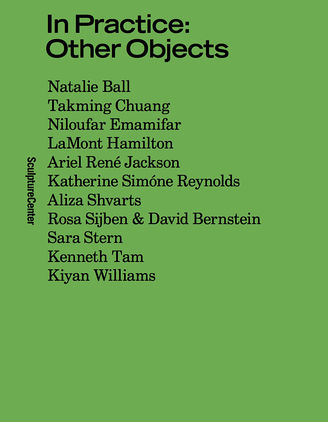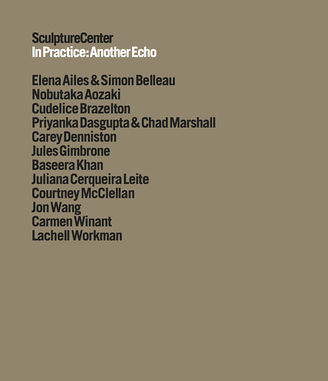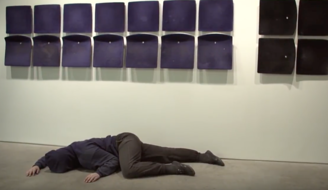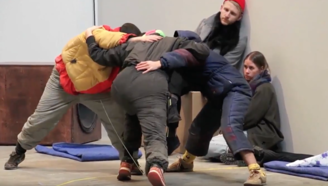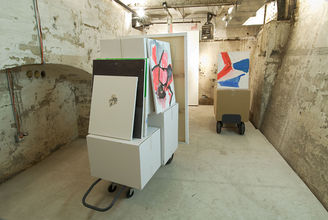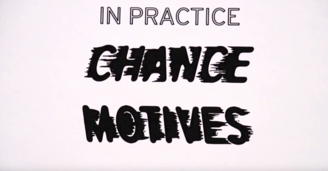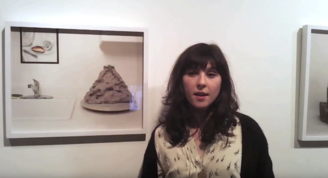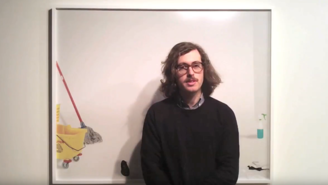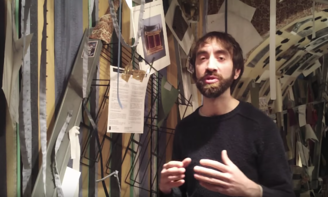In Practice Fall '07
In Practice Fall '07Sep 9–Nov 25, 2007
- Images
- Text
- Events
- Press
- Sponsors
- Related
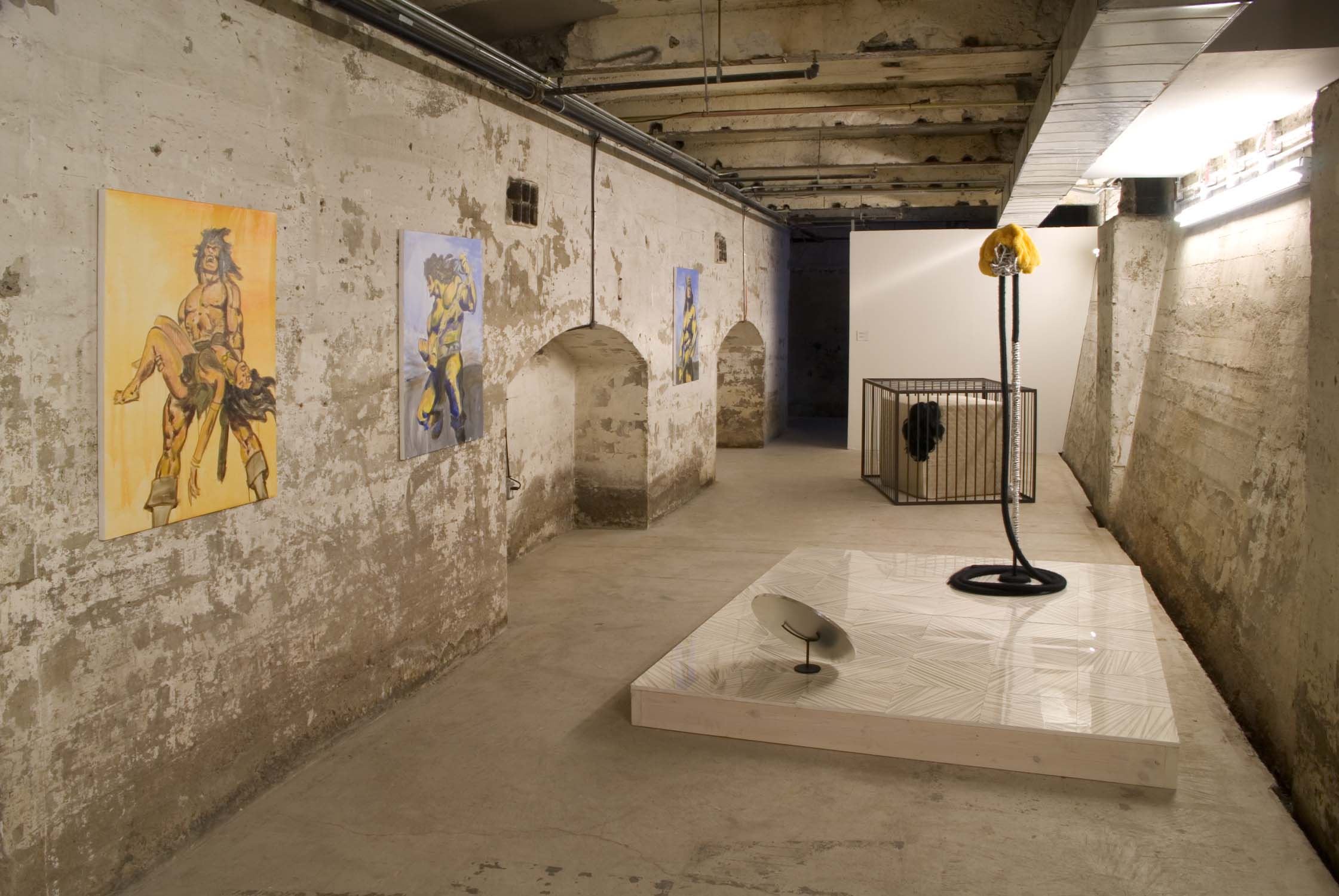
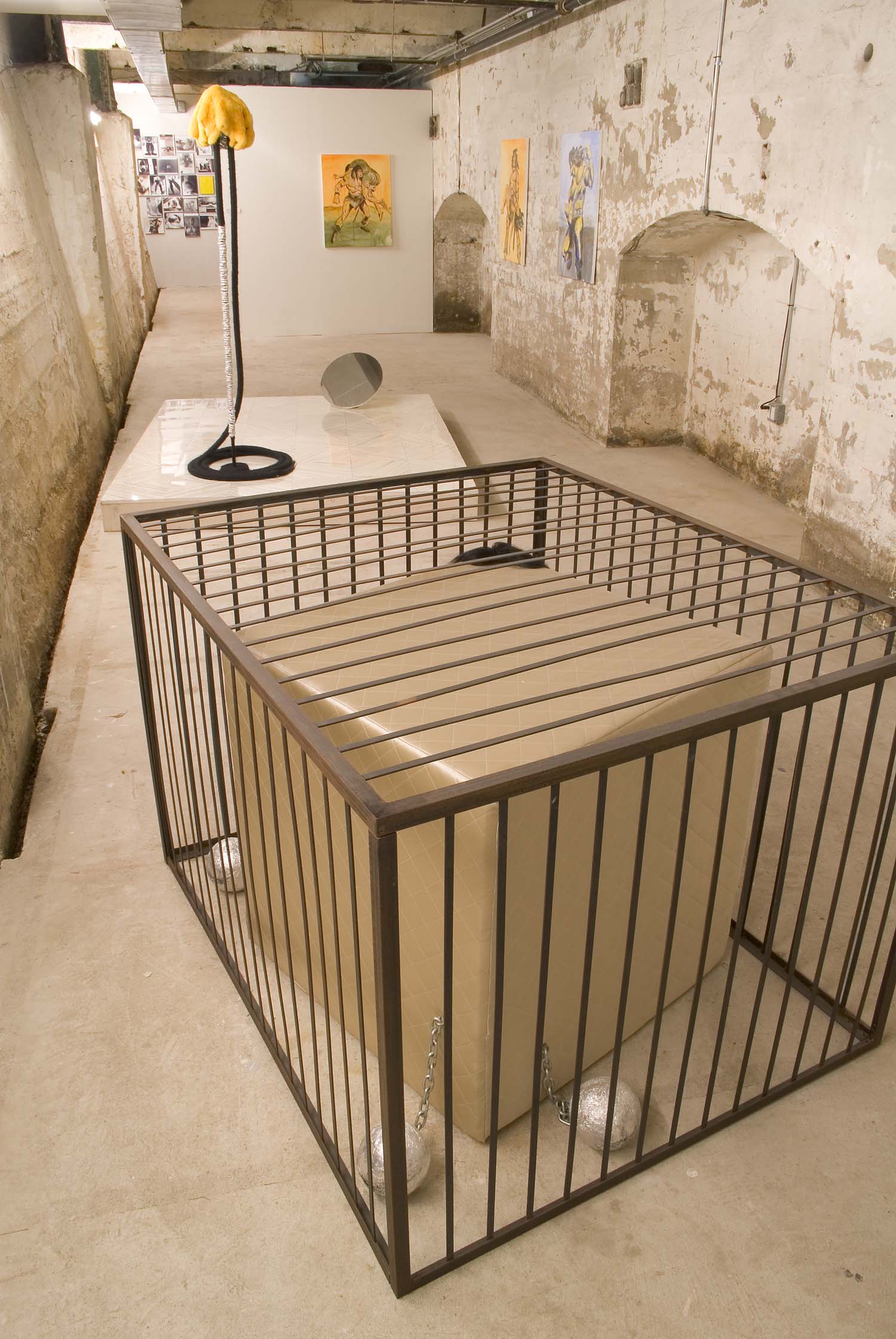
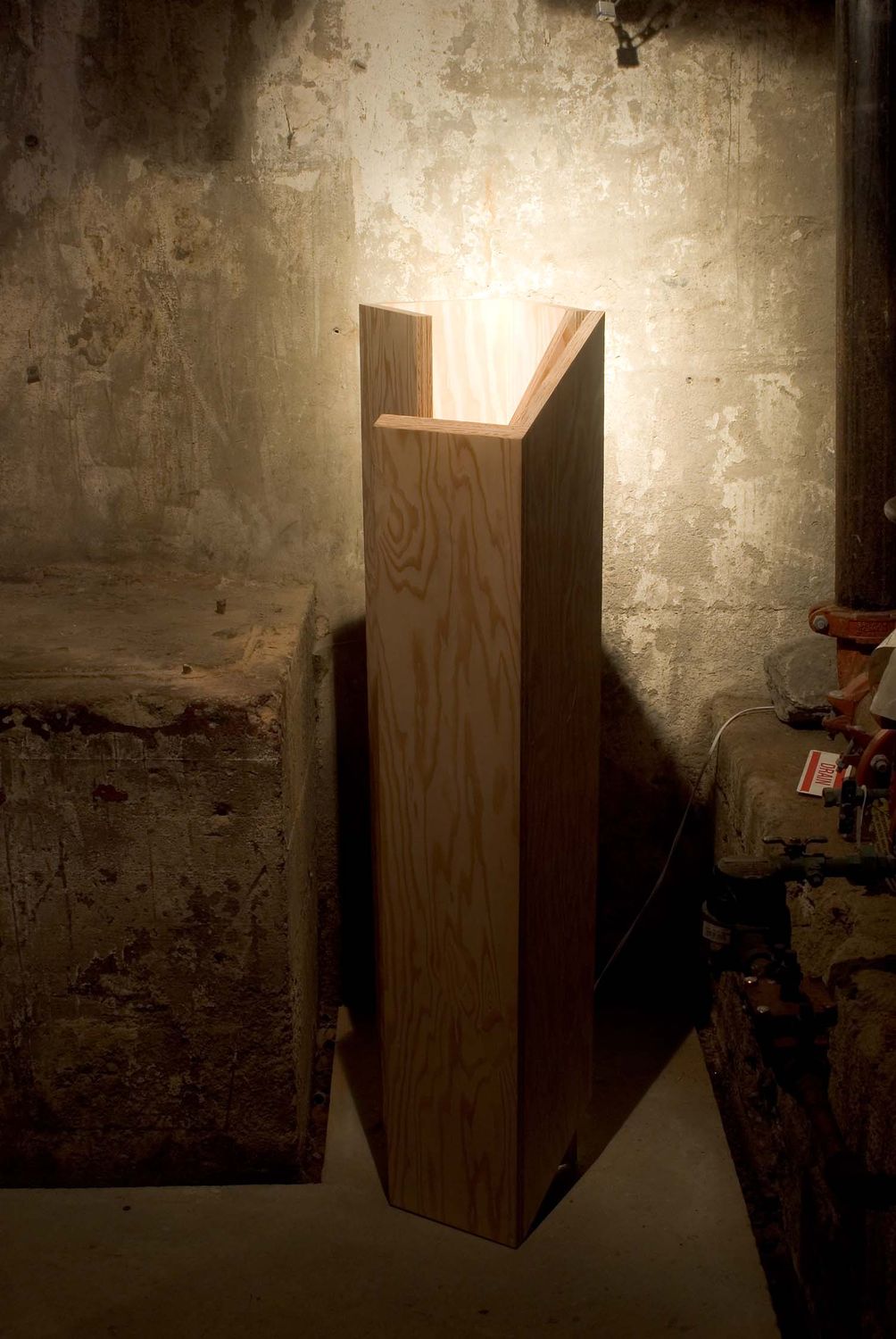
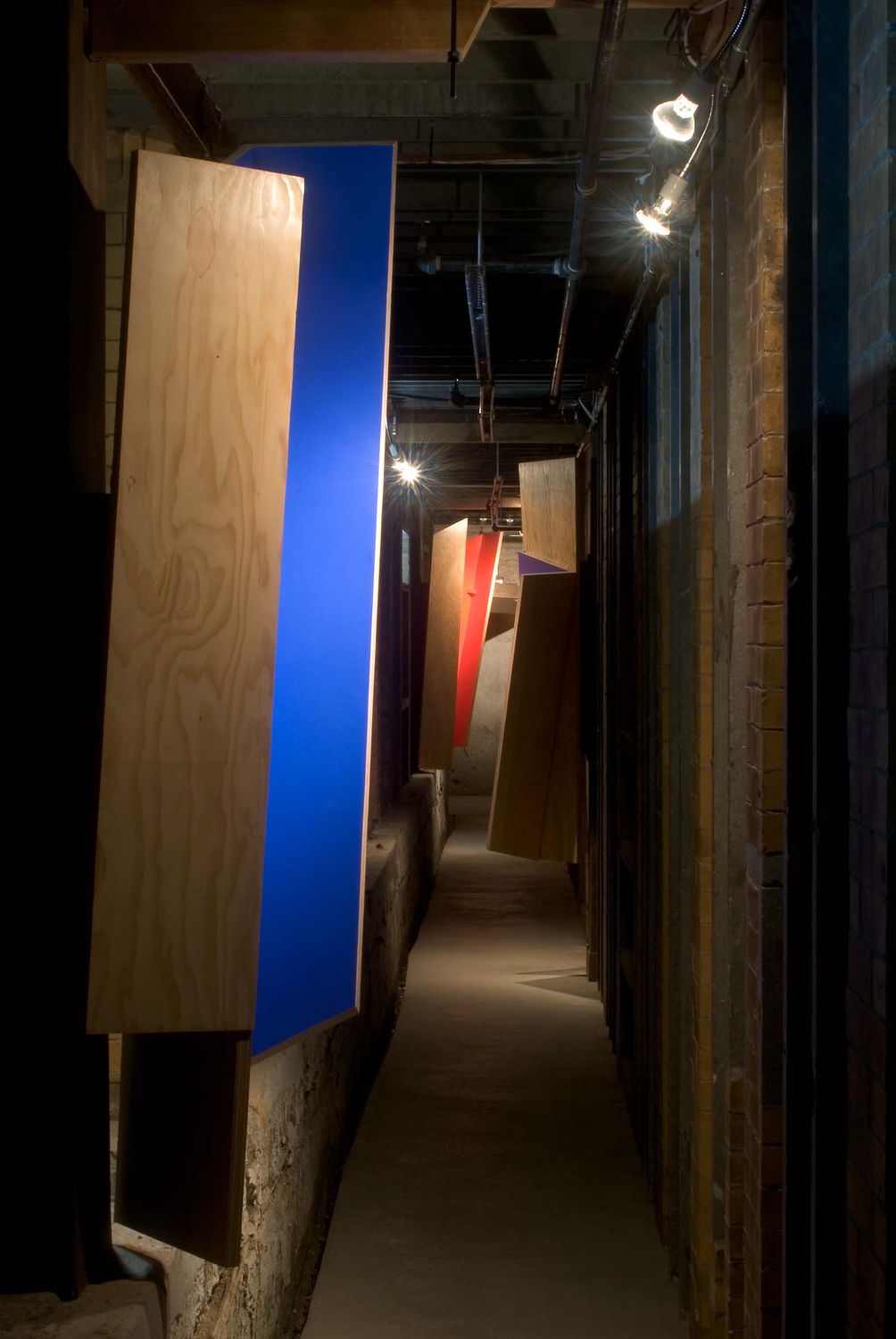
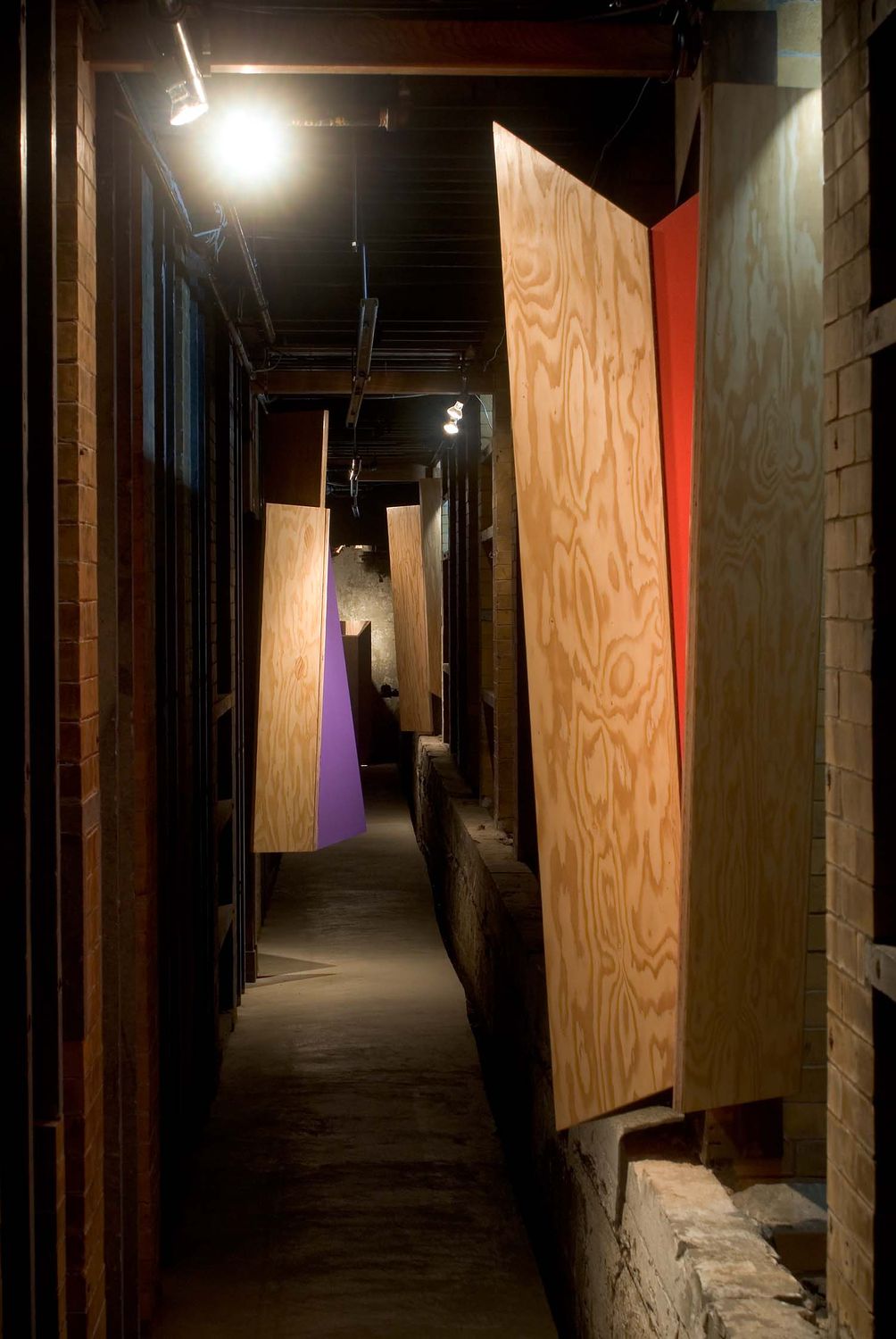
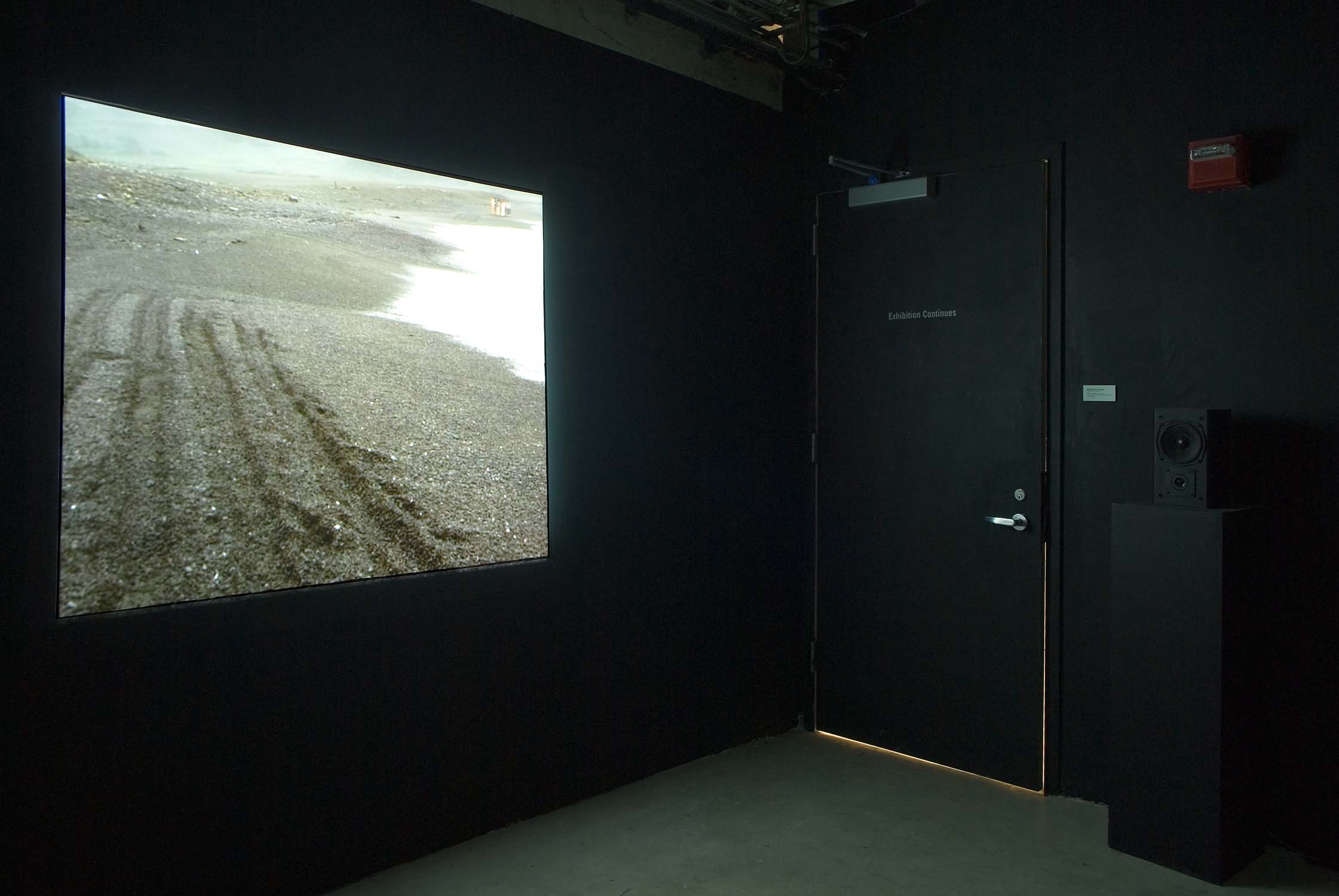
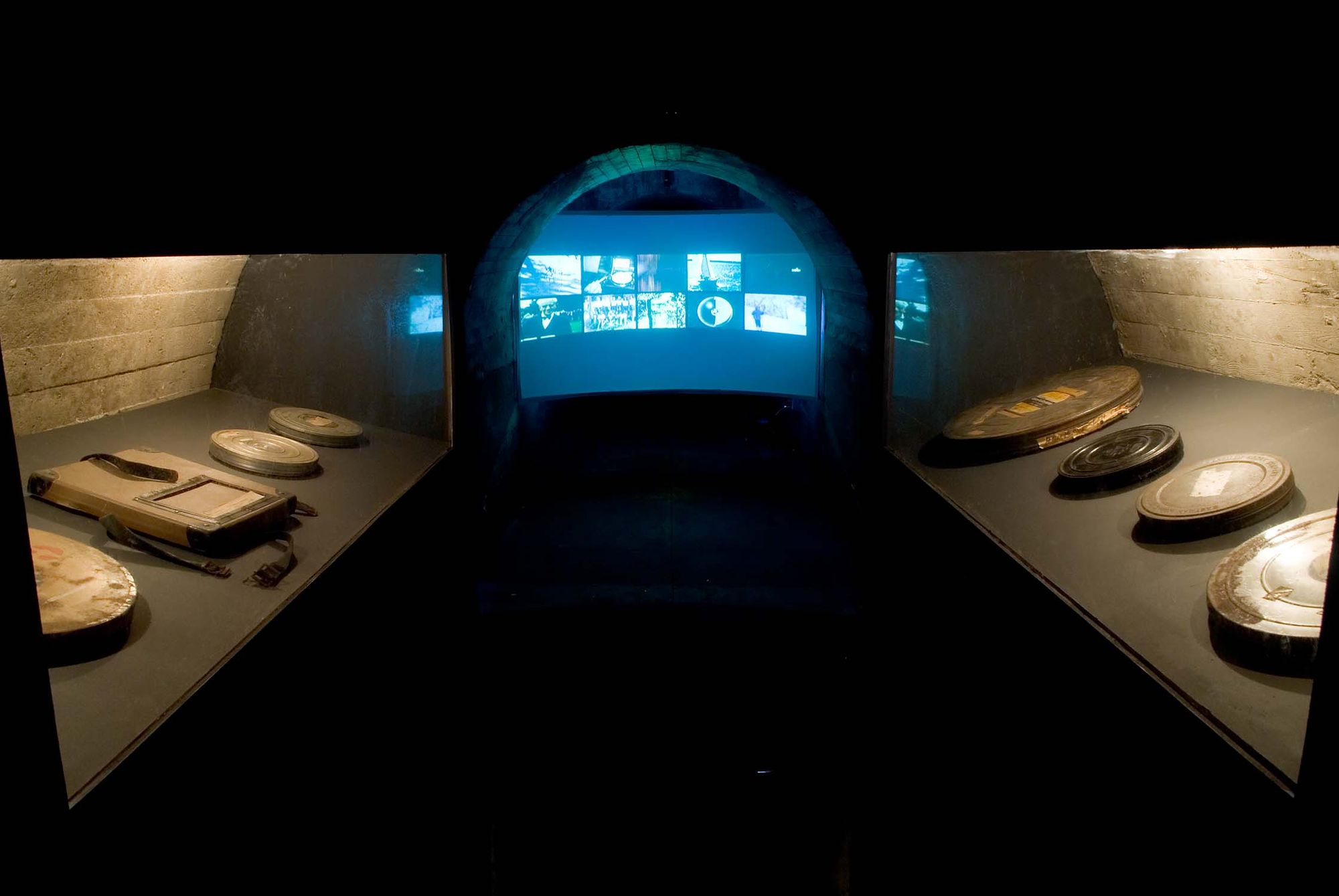
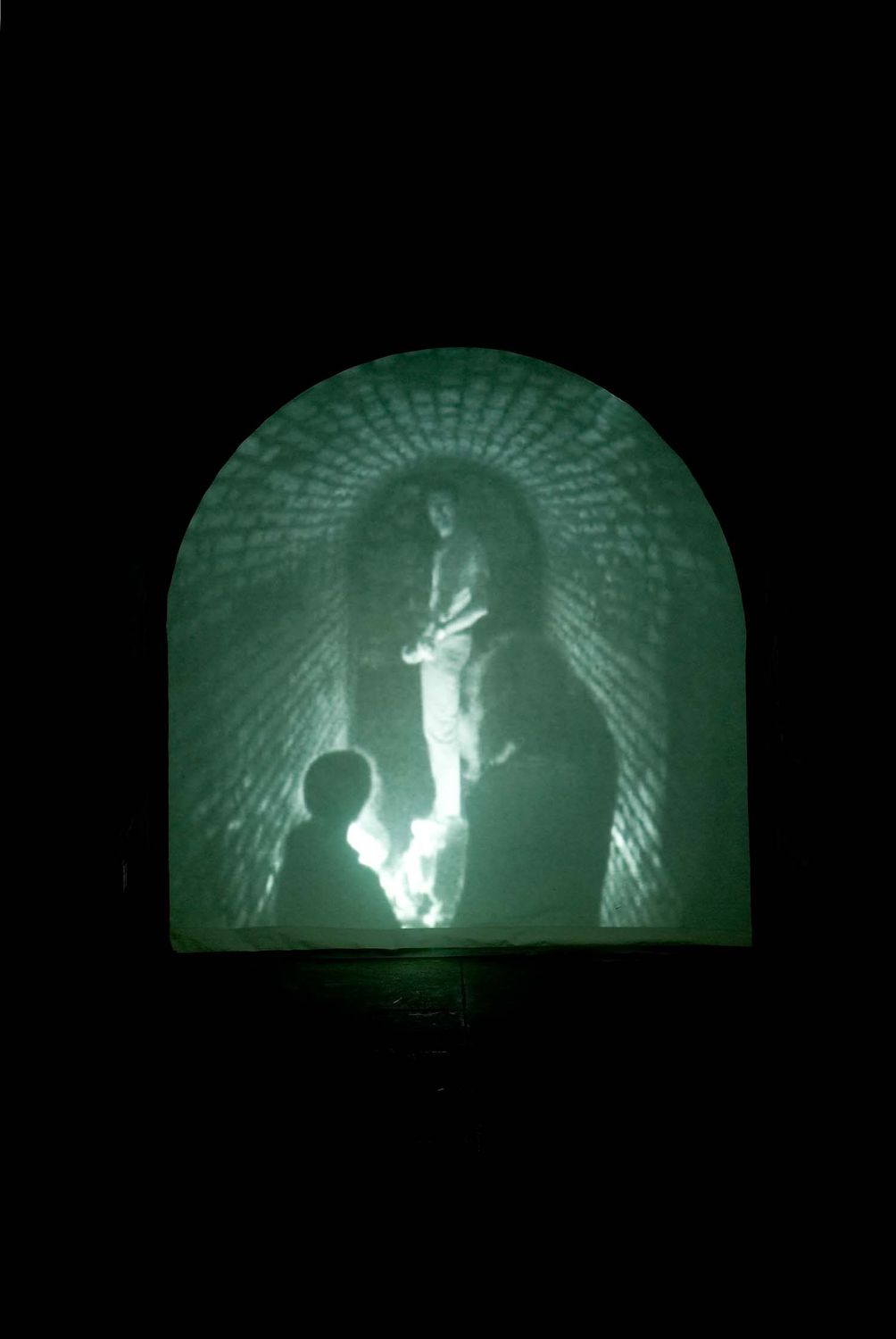
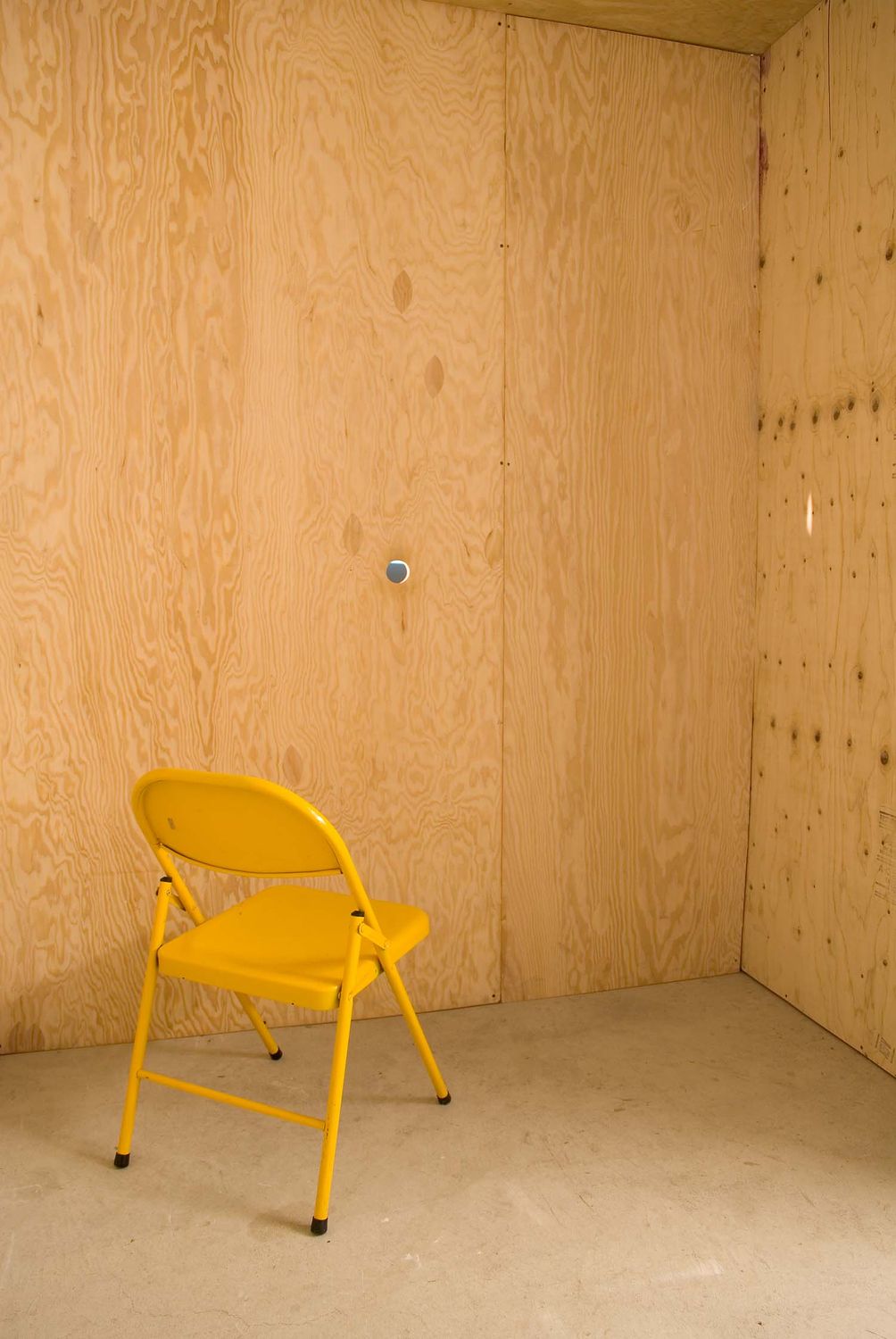
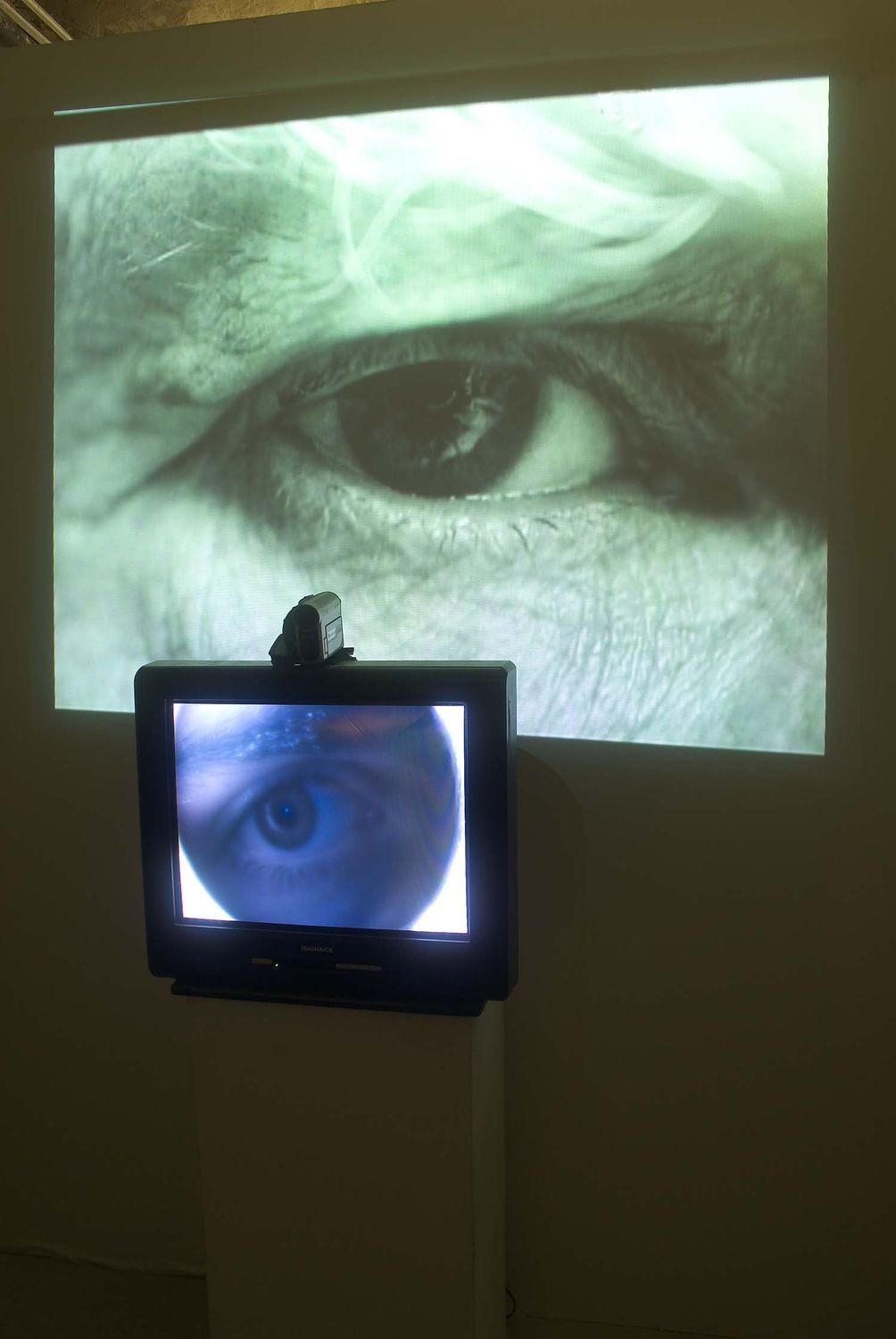
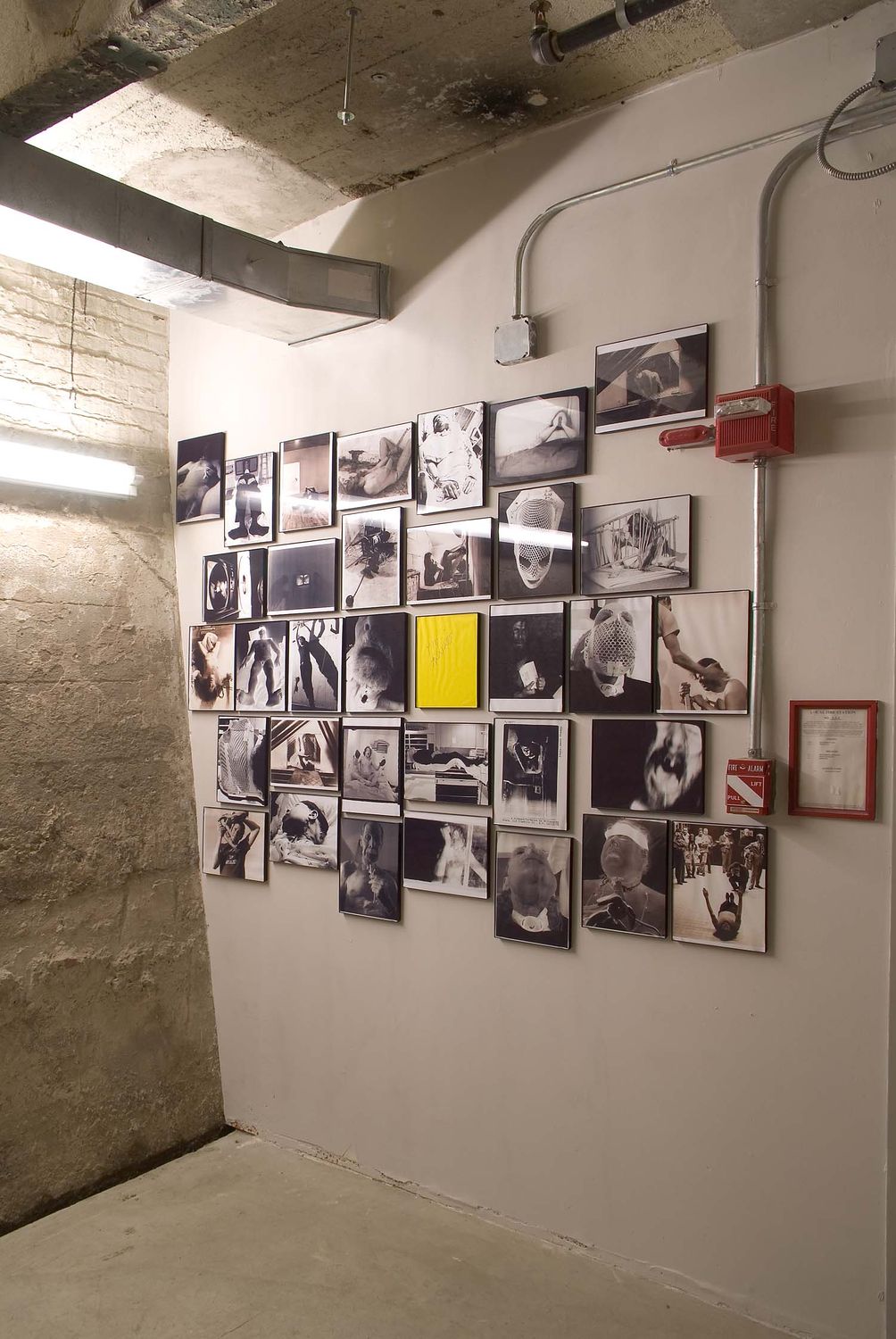
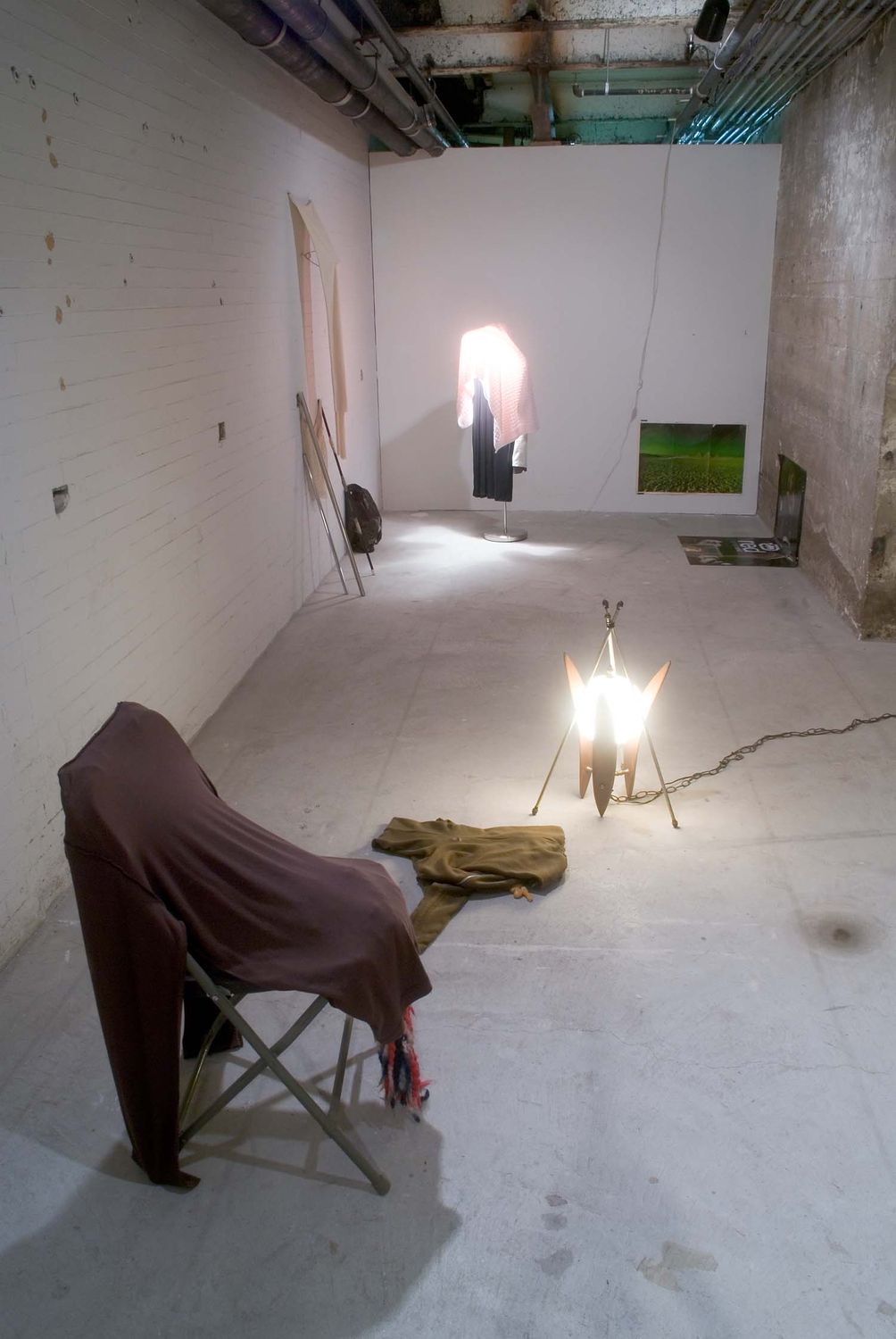
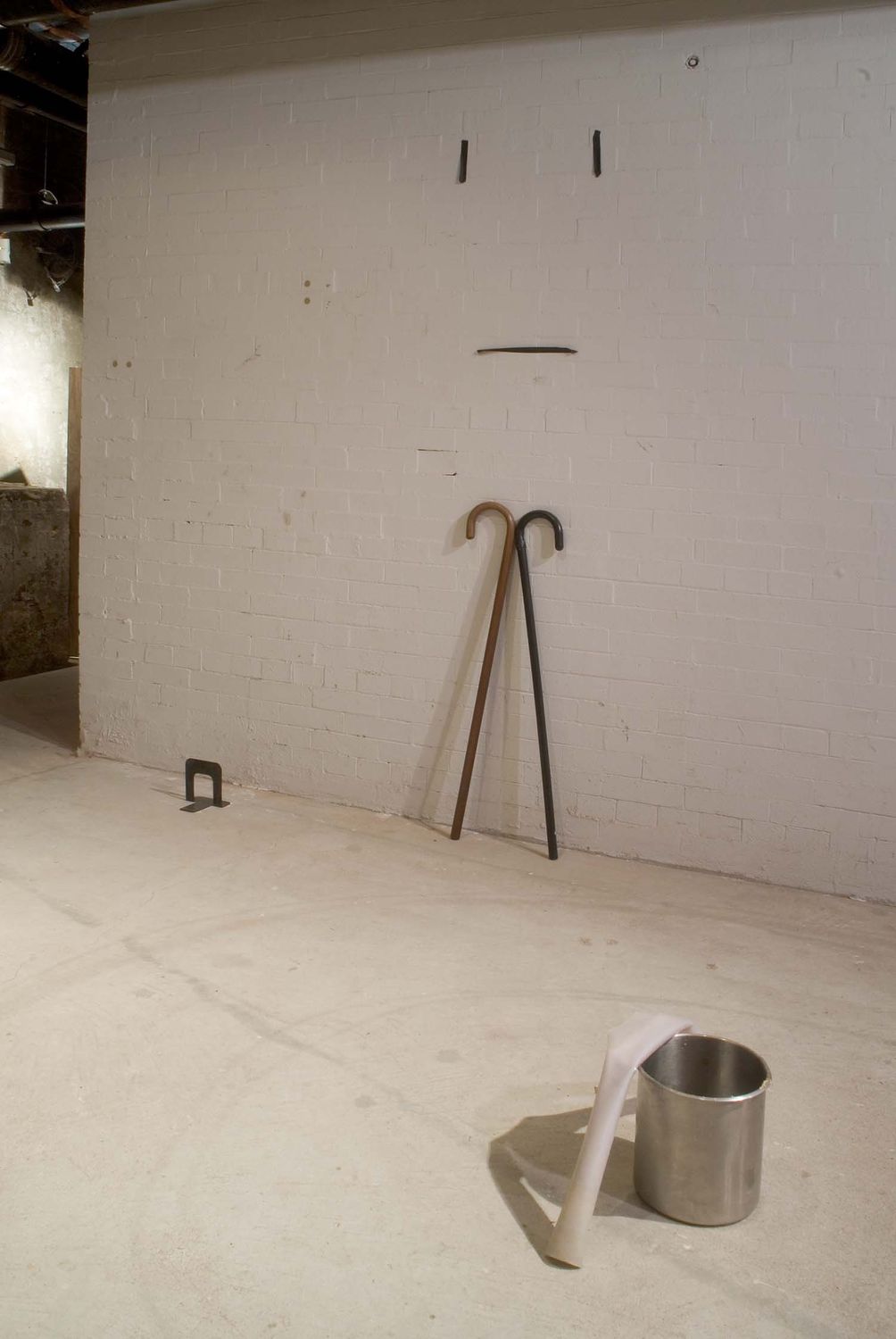
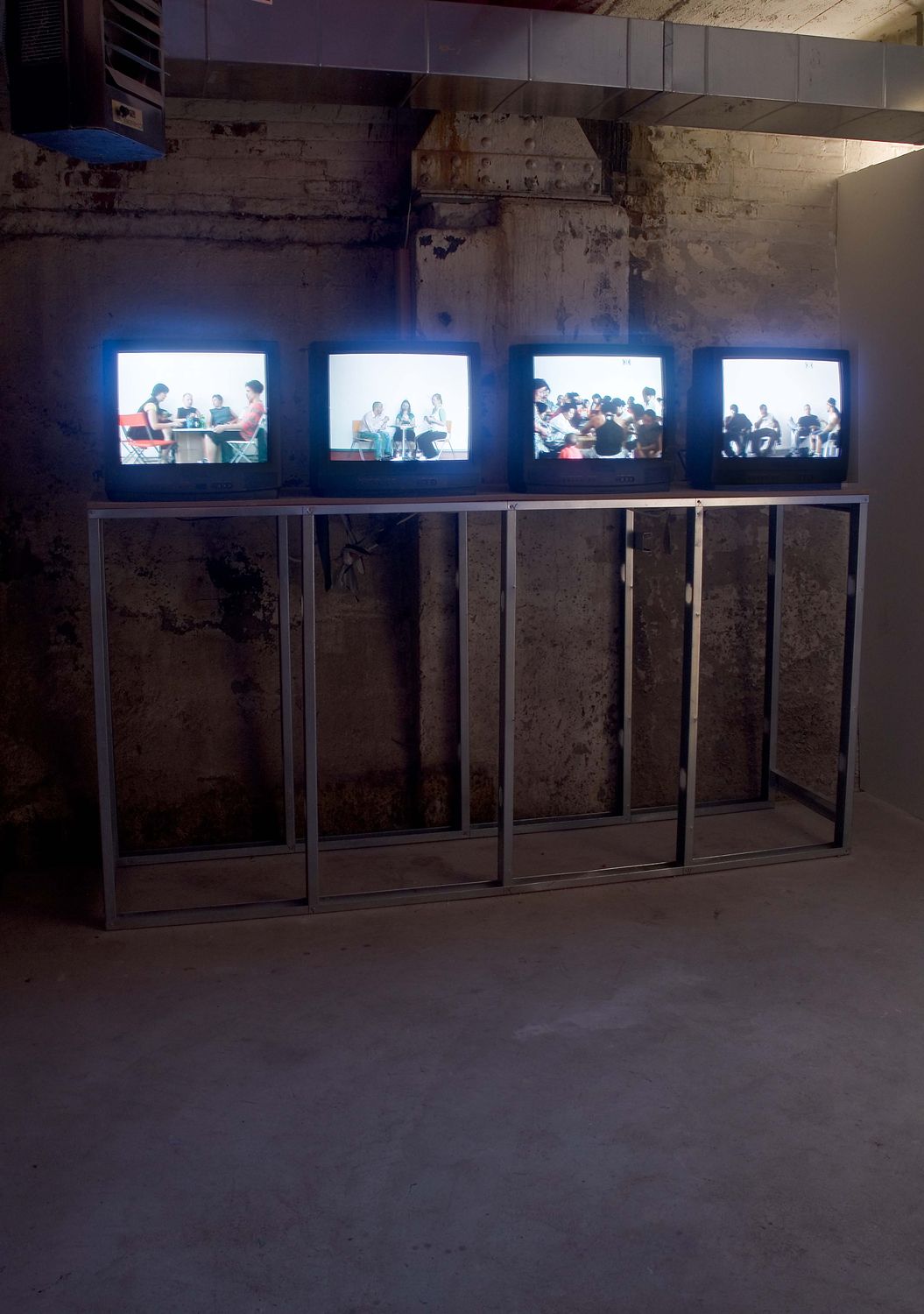
Installation view of in Practice Fall '07
The works in this exhibition are commissioned through SculptureCenter's In Practice project series, which supports the creation and presentation of innovative work by emerging artists. The projects are selected individually and reflect the diversity of approaches to contemporary sculpture.
Nina Lola Bachhuber's "combine sculptures" adopt the formal-symbolic language of surrealist sculpture while toying with post-minimalist registers of form and incorporating a wide variety of media such as mirrors, fabric, metal, aluminum foil, vinyl tubing, hair, fur, and in some cases, drawings on paper. Fausse blonde (2005) and Ottomanne emprisonnèe (2006/7) are strongly connotative and narrative pieces that flirt with 19th century romantic genres while retaining critical dimensions ranging from evocative to potent, and controlled to pugnacious.
Richard Bottwin's sculptures fold, hinge, and spring off the wall, creating a staccato, playful movement. Constructed out of plywood, the surfaces are detailed with directional wood grain or painted with bright acrylic colors. Each piece reveals surprising shapes and patterns based on a modernist repertoire that shift according to the viewer's perspective. A sense of disorientation, implied weightlessness, and the element of surprise enliven the reductive forms and counter the modernist vocabulary of the constructions.
Edward Kihn's multi-channeled video Minutes from a Counter-Revolution (2007) presents an array of found films dating from the CIA's 1954 coup to topple the Arbenz administration in Guatemala. Models of time and space develop alongside cinematic and photographic technologies, within the context of political strategy and doctrine. Disparate points of connection enlighten the conceptual choices of the work: from the philosophy of one of Guatemala coup's architects, John Foster Dulles, to his tutelage under Henri Bergson, to Bergson's riposte against cinema for its discrete, fragmentary re-composition of time, to Eadweard Muybridge's photographic tour of Guatemala in the 1870's.
Paul & Wilken present four collaborative paintings: The Thief, The Slayer, The Conqueror, and The Barbarian (2007). These new works entertain a devious relation to the genre of bad painting, appropriative strategies, and aspects of German and US post-war art, while expressing a scathing critique of masculine gestural painting and subject matter. Like a double-edged sword, the hubristic, adolescent excess contained in the works paired with the whole-hearted, engagement of the artists towards the execution of their subject seem to unabashedly celebrate the very tropes they might engage with. Tantalizing and comical, the works play with levels of tolerance and indulgence within the viewers.
Cesare Pietroiusti's artistic practice articulates a critique of authority and institutions, property, and value as assigned by systems of power. Petroiusti deals with these concerns through an array of different tactics, from gestures engrained in everyday life, to the elaboration and participation in alternative modes of organization. Untitled (2006) was filmed at midnight on April 30, 2006, the deadline for the eviction of squatters living in the Angelo Mai social center and former convent in Rome. In this film the artist demolishes a wall located at the end of an underground tunnel to reveal what may lie beyond the layers of architecture.
Willoughby Sharp might have best described his approach when he declared, "I am an information artist." His new installation Then & Now (2007) offers an insight into multiple works, installations, and interventions by Sharp co-edited with Pamela Seymour Smith, and spanning over forty years of cultural production: from the elaboration of Avalanche Magazine in the early '70s to recent developments in Sharp's personal life and work. While making a brutal statement about the non-linearity of time, Then & Now functions as an apparatus calibrated to demonstrate the inescapability of life, the self, and the human gaze.
Nolan Simon reduces strategies of representation to a minimum despite the potential connotative content of his chosen materials. Found and made elements are juxtaposed and mingled until they reach a state of balance and equivocal equilibrium within formal arrangements. By focusing on the how rather than the what, any potential meaning attributed to the work wanders from object to object, from one arrangement to the next. The work confers a deference toward iconoclasm, a bias towards cheap, found materials, and a concrete approach to abstraction.
Elisabeth Smolarz began The One Hundred Dollar Project in 2006. Articulated as a series of case studies that led the artist to collaborate with communities of people from Beijing, New York, and Berlin. The piece begins with the question, "How many people can be hired for $100?" The work's engagement with labor theory or systems of exchange-value may seem inconclusive, but what emerge are the structures of informal relations among participants. In addition, the participants' awareness of the camera lends insight to the most minimal degree of performance.
Four Parallel Lines (2007), is a video installation made in collaboration by artists Mary Ellen Strom and Ann Carlson and four men who work as day laborers: Jose Bautista, Joel Gomez, Lisandrow Vicente, and Carlos Hernandez. Four parallel lines are drawn on a stretch of beach using 6" x 2" lumber. The ocean eventually washes the workers' line drawings away. References to earth works and other art historical genres are deployed to give focus to the lives of immigrants and their labor within an immersive, physical experience.
Sponsors
SculptureCenter's exhibitions and public programs are supported by The Andy Warhol Foundation for Visual Arts and The Lily Auchincloss Foundation. In Practice is supported in part by a grant from the Jerome Foundation.
